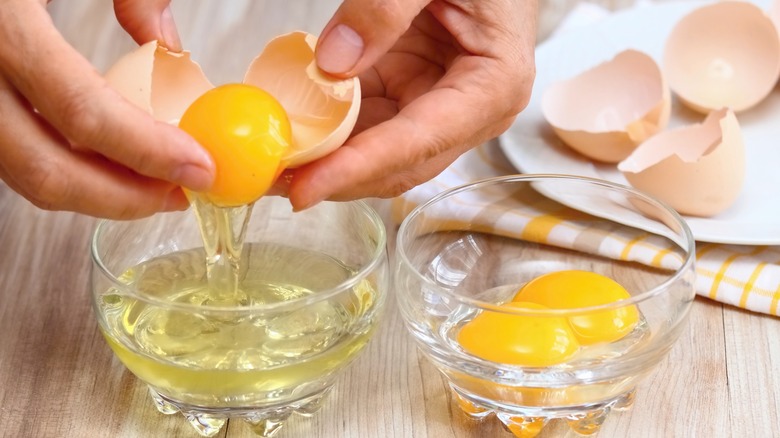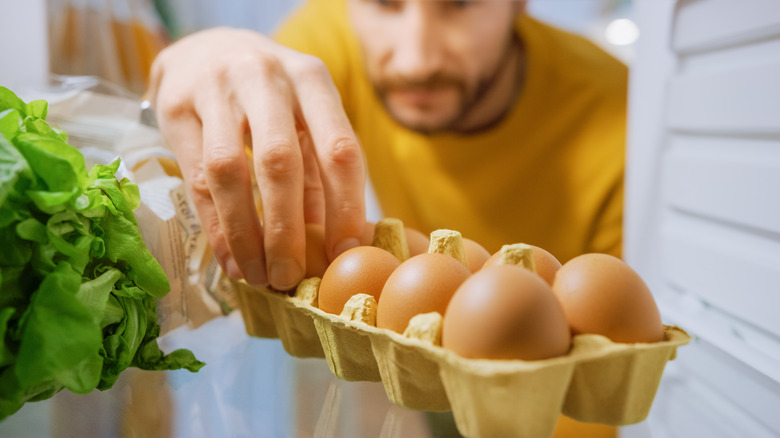The Simple Method That Makes Separating Eggs Much Easier
What home cook would want to be without eggs? They play a starring role in so many of our favorite dishes, from scrambled to omelets to frittatas. But as any baker knows, they're also indispensable in making many favorite dessert recipes. According to Sara Moulton, eggs are a necessary for the structure of cakes, cookies, and other baked goods. The reason is that the yolk's fat helps provide richness and tenderness, their whipped whites can ensure height and leavening, and egg washes also help bring browning and sheen to rolls, pie crust, and more.
As amazing as eggs are, what's even more incredible is that their two distinct parts, the white and the yolk, each brings its own set of properties to baking. If you love to bake, you've more than likely separated your fair share of eggs, using the yolks to color and puddings and custards, for instance, and putting the stiff whipped egg whites to work in desserts such as meringues, pavlovas, and angel food cake (via Pete and Gerry's). And as you likely also know, separating eggs can be tricky, especially if it's the whites you want to use: Even a single drop of egg yolk in the egg white can make the later unable to whip into stiff or even soft peaks, due to the presence of fat in the yolk (via What's Cooking America). If you're sick of messing up when separating eggs, read on for a tip that will make the process almost foolproof.
Chill your eggs prior to separating them
If you live in the U.S. or a handful of other countries, you most likely refrigerate your eggs. But in many places around the world, folks just store them at room temperature. According to Spoon University, countries that store eggs at room temp can do so because the eggs aren't washed before being sold and so their natural cuticle will help keep bacteria on the shell, not inside the egg. If you've visited any of those countries, you might know that separating a room temperature egg is challenging, as the yolk is liquidy and is more likely to break and run into the white (via Food Network).
For cleanly separated eggs, make sure they're cold before you separate them — which won't be an issue for you if you routinely refrigerate eggs, anyway. If you don't, pop them in the fridge first. If it's the yolks you're after when separating, you're good to go. But if you're going to be whipping the whites for meringues or soufflés, you're going to want to bring the whites back to room temp post-separating: As pointed out by Fine Cooking, the whites are more liquidy when warmer, so therefore will incorporate air more easily as you whip them. After separating, leave the bowl of whites out for about 15 minutes to bring them back to room temperature. Or, if you're in a rush, place them into a larger bowl of warm water for about five minutes.

